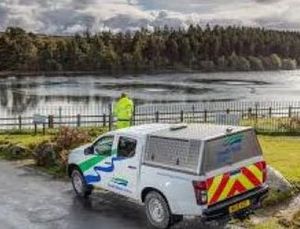On Tuesday, September 2, 2025, a string of dramatic incidents and emergency responses unfolded across South Africa and the United Kingdom, underscoring the relentless pace and complexity of modern rescue and law enforcement operations. From a lorry crash that paralyzed a major UK motorway to coordinated cross-border police efforts in southern Africa, first responders faced a demanding day of challenges that tested their skills and resolve.
In the early hours of Tuesday morning, the northbound carriageway of the M6 motorway between junctions 34 and 35 near Halton, Lancaster, was brought to a standstill after a heavy goods vehicle (HGV) overturned and collided with the central reservation, spilling fuel across the road. According to Liverpool Echo, emergency services were called to the scene at approximately 2:26am. The driver, who sustained injuries to his arm and ribs, was promptly transported to hospital for treatment. Police confirmed that no other vehicles were involved in the crash.
The aftermath of the accident was significant. National Highways reported that while the overturned HGV was eventually recovered, the carriageway required extensive emergency resurfacing works and was expected to remain closed for most of the day. One lane of the southbound carriageway was also shut, leading to long tailbacks and congestion on the A683 and A6, with delays stretching through Slyne, Bolton-le-Sands, and Carnforth. The Lancashire Fire and Rescue Service, which responded at 2:17am with three fire engines from Morecambe, Lancaster, and Carnforth, stated, "Crews provided trauma care using a trauma pack to one casualty and used a hose reel and environmental pack to make the scene safe. Crews were on scene for approximately one hour and thirty minutes." Motorists were advised to follow a lengthy diversion route via the A683 and A65, passing through several villages before rejoining the motorway network.
Meanwhile, back in South Africa, the day was marked by a series of incidents that kept first responders and law enforcement agencies on high alert. In the Western Cape, teams from Wilderness Search And Rescue (WSAR), supported by SANParks - Table Mountain National Park rangers, were called to assist a 38-year-old hiker who was injured while descending Lion's Head. The rescue operation, which took place on September 2, highlighted the ongoing risks faced by outdoor enthusiasts and the vital role of coordinated rescue teams in the region.
Later that afternoon, at approximately 16:50, Rustenburg First Responders were dispatched to Olienhout Avenue following reports of a single-vehicle motorcycle accident. According to Arrive Alive, the incident involved only the motorcycle, and emergency medical services, including Bojanala EMS, were quickly on the scene to provide assistance. The details of the rider's injuries were not immediately disclosed, but the rapid response underscored the preparedness of local emergency teams.
Elsewhere in Durban, Advanced Life Support Paramedics faced a grim scene on the N2 South near the Old Airport, where a shooting incident and subsequent crash left one person dead and another in critical condition. Paramedics worked to stabilize the surviving victim on-site, with Arrive Alive reporting ongoing updates as the situation developed. The incident served as a stark reminder of the unpredictable dangers present on South Africa's highways.
Law enforcement activities were also ramped up throughout the day. The Durban Metro Police Service launched enforcement operations across the EThekwini Municipality, focusing on a range of offenses. Several motorbike riders, identified as illegal immigrants working without proper documentation, were arrested, while drivers washing vehicles on public roads were dealt with in accordance with local bylaws. Additionally, unroadworthy vehicles were removed from circulation, reflecting a broader crackdown on traffic violations and public safety risks.
In another notable event, a white Isuzu KB250 hijacked from Mafukuzela Highway (M25) in Inanda, KwaZulu-Natal, was swiftly recovered by Reaction Officers after the vehicle suffered a puncture shortly following a paint delivery. The recovery operation, reported by Arrive Alive, illustrated both the prevalence of vehicle hijackings and the effectiveness of rapid police intervention in curbing such crimes.
Public transportation was not spared from misfortune. On the evening of September 1, an Intercape coach carrying 46 passengers was involved in an accident approximately 9km north of Touwsriver on the N1. Details regarding the cause of the crash and the extent of injuries were still emerging, but the incident added to a growing list of transportation-related emergencies in the region.
In Limpopo, the Provincial Commissioner of Police, Lieutenant General Thembi Hadebe, commended the Limpopo Tracking Team for their vigilance and resilience in combating organized crime. On September 1, the team received intelligence that led to further action against criminal networks operating both within and beyond provincial borders. Their efforts drew praise for bolstering public safety and disrupting sophisticated criminal enterprises.
Durban Metro Police maintained a visible presence on key routes during the morning rush, with Bike Units actively monitoring traffic on the M4 North and South and at the N2/N3 split. Their primary mission was to prevent drivers from cutting through traffic and to ensure order on some of the city's busiest thoroughfares. South Coast routes also saw increased patrols in response to recent incidents and ongoing safety concerns.
Highlighting the importance of international cooperation, a multi-disciplinary joint operation between South Africa and Botswana was conducted along the countries' shared border from August 28 to August 31. The initiative targeted cross-border crimes such as stock theft, human trafficking, and drug smuggling. According to Arrive Alive, the operation represented a concerted effort to address transnational criminal activity and strengthen security across the region.
As these events unfolded, they painted a vivid picture of the daily pressures faced by emergency responders, law enforcement officers, and public safety officials. From the highways of Lancashire to the rugged landscapes of the Western Cape and the busy streets of Durban, the challenges were as varied as they were relentless. Yet, through swift action, coordination, and a commitment to public service, teams across continents worked tirelessly to keep communities safe and restore order in the face of adversity.
Each incident—whether a dramatic motorway closure, a daring rescue on a mountain trail, or a high-stakes police operation—served as a reminder that the work of first responders never truly ends. Their efforts, often unseen and sometimes unsung, remain the backbone of public safety in a world where the unexpected can happen at any moment.




